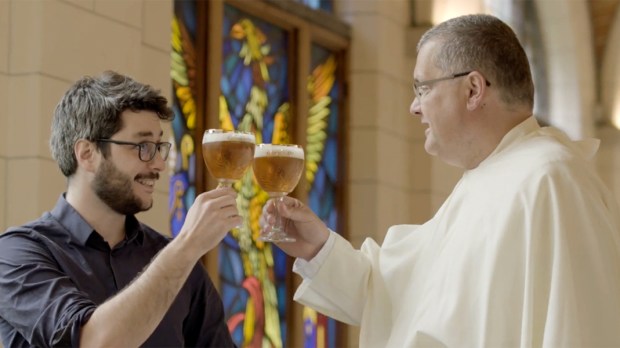Beer lovers rejoice! Soon we will be able to sample a variety of beers from a simpler time, when Belgian monks toiled ceaselessly to brew the finest beer in Europe.
The monks at Norbertine Abbey recently pored over a collection of 200-year-old books which were once nearly destroyed by a fire. None of them had any idea they were about to rediscover the lost art of brewing Grimbergen beers, which has not been practiced by the brothers since the end of the 18th century.
The Grimbergen name has survived the centuries, thanks to the Danish beer giant Carlsberg, which has licensed the name for an internationally renowned beverage, but these beers are made using modern techniques.
The brothers of the abbey, however, intend to begin brewing the original beer themselves. Utilizing the methods which they discovered in their books — some of which date back to the 12th century — they plan to house the operation in a new microbrewery, which will be constructed inside the walls of Grimbergen Abbey, near Brussels.
CNN reports, Rev. Karel Stautemas, subprior at the abbey, said in a statement:
“Beer has always been part of life in the abbey and we are proud of the beers we have today.” He continued, “We’ve spent hours leafing through the books, which are written in Latin and Old Dutch, and have discovered ingredient lists for beers brewed in previous centuries, the hops used, the types of barrels and bottles, and even a list of the actual beers produced centuries ago.”
The plans for the microbrewery include an onsite bar and restaurant. They expect the construction to be complete by 2020, when it will open to the public for tastings and meals. The brothers say they expect to be able to produce about 10,000 hectoliters per brew.
Father Karel teased CNN with a description of one of their “new” beers: the limited-edition Grimbergen Triple D’Abbaye, which ages for 5 months in whiskey barrels before it is bottled. This technique was used in the production of Belgian brews as far back as the 1500s.
The official description of the beer reads:
“To begin with, the beer is aged in French oak barrels, which were previously used for bourbon and whisky, and yeast is added to give it a slight refermentation. During this time, the coriander, fruity and spicy phenolic flavours decrease allowing the malty, sweet, vanilla flavors from the whiskey barrel to infuse itself.”

